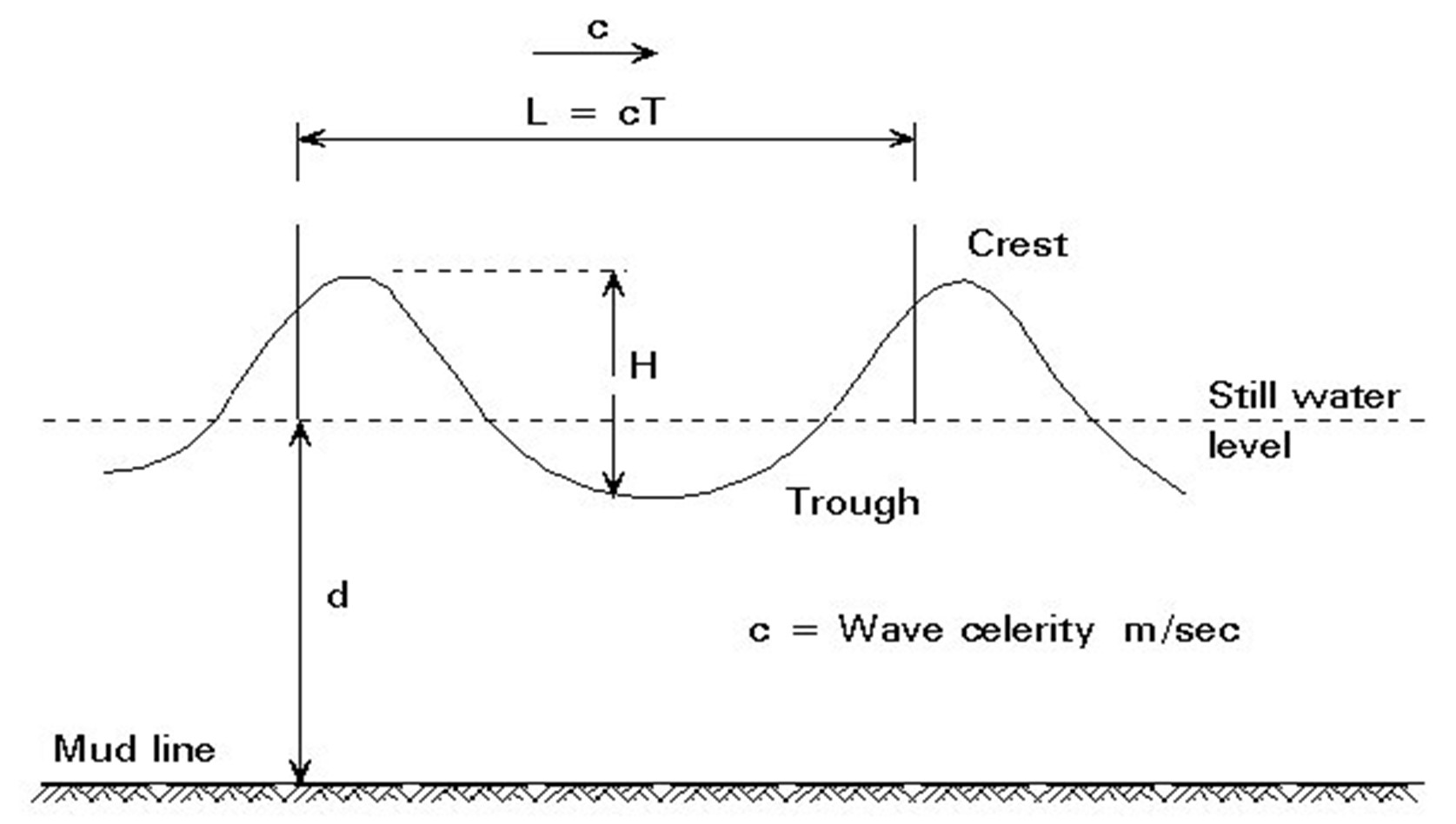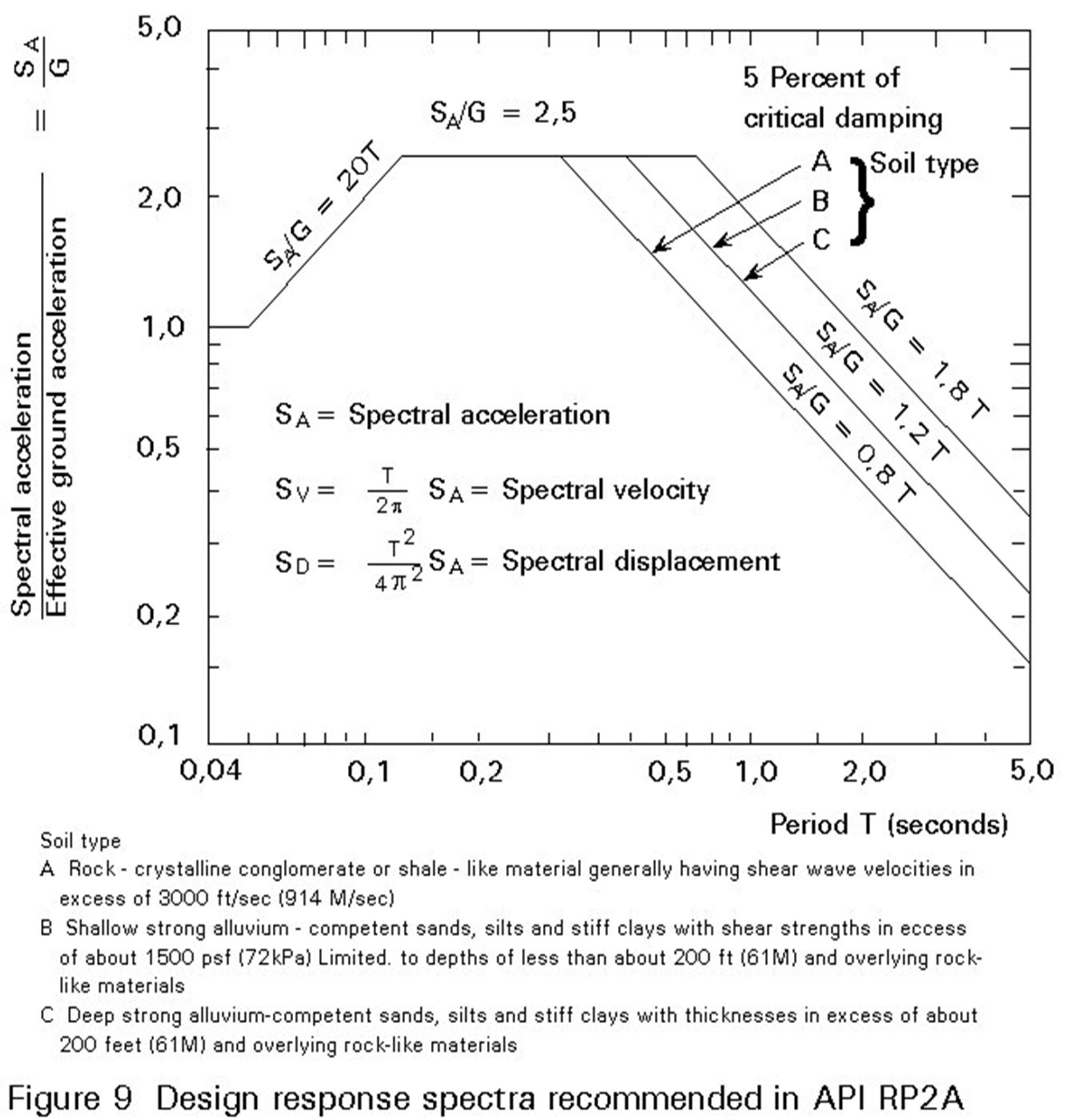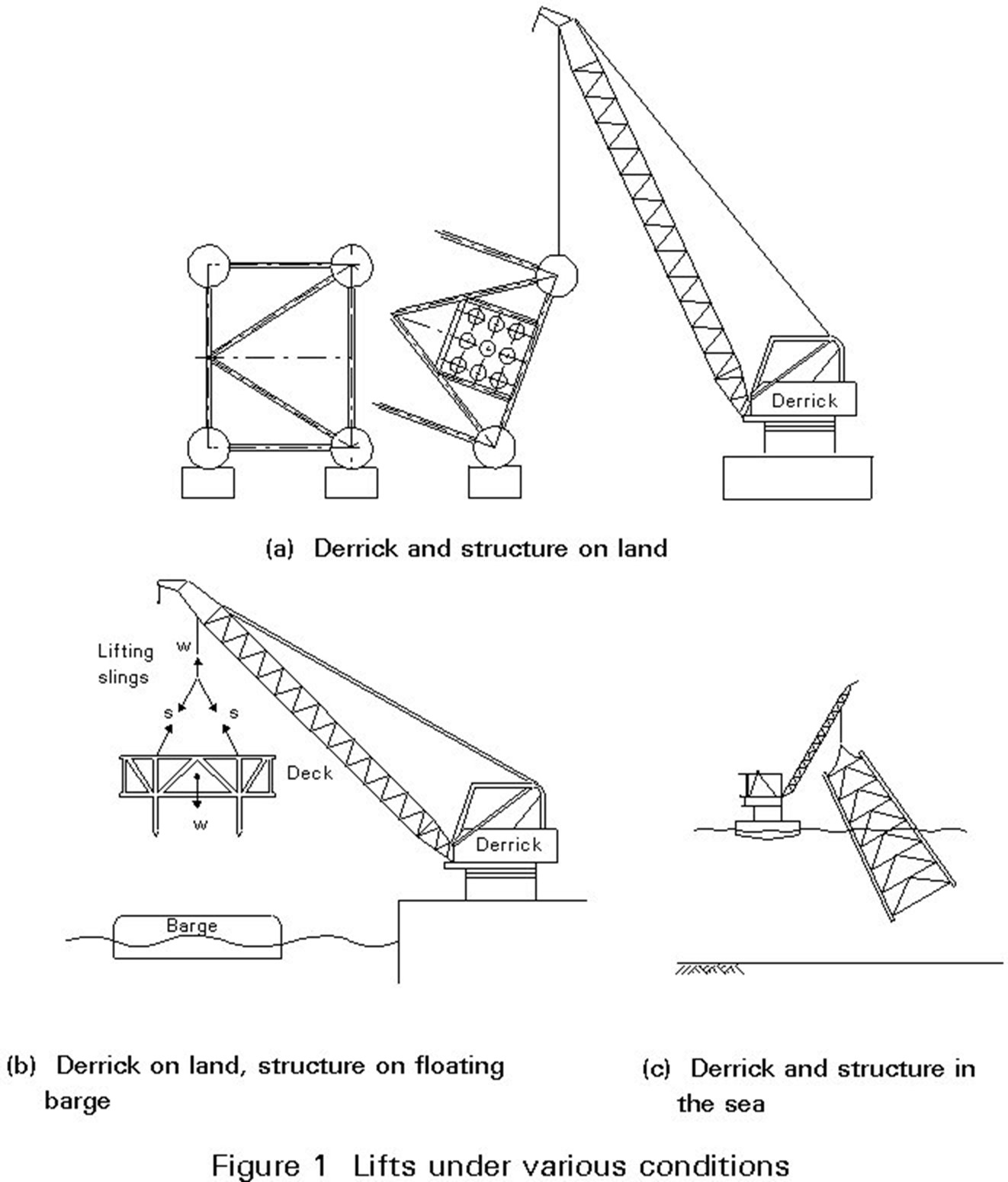An offshore structure is generally used to accommodate all the equipment & facilities required for the oil & gas production from the seabed. The offshore structure has to be designed for different loads which it has to see during its design life. In addition since the offshore structure is installed in a marine environment it has be design for the harass environment factors too.
Offshore structure shall be designed for following types of loads:
- Permanent (dead) loads.
- Operating (live) loads.
- Environmental loads.
- Wind load
- Wave load
- Earthquake load
- Construction – installation loads.
- Accidental loads.
The design of offshore structures is dominated by environmental loads, especially wave load
1. Permanent Loads:
Weight of the structure in air, including the weight of ballast.
– Weights of equipment, and associated structures permanently mounted on the platform.
– Hydrostatic forces on the members below the waterline. These forces include buoyancy and hydrostatic pressures.
2. Operating (Live) Loads:
– Operating loads include the weight of all non-permanent equipment or material, as well as forces generated during operation of equipment.
– The weight of drilling, production facilities, living quarters, furniture, life support systems, heliport, consumable supplies, liquids, etc.
– Forces generated during operations, e.g. drilling, vessel mooring, helicopter landing, crane operations.
– Following Live load values are recommended in BS6235:
Crew quarters and passage ways: 3.2 KN/m2
Working areas: 8.5 KN/m2
3. Environmental Loads
a. Wind Loads:
– Wind load act on portion of platform above the water level as well as on any equipment, housing, derrick, etc.
– For combination with wave loads, codes recommend the most unfavorable of the following two loadings:
- 1 minute sustained wind speeds combined with extreme waves.
- 3 second gusts.
– When, the ratio of height to the least horizontal dimension of structure is greater than 5, then API-RP2A requires the dynamic effects of the wind to be taken into account and the flow induced cyclic wind loads due to vortex shedding must be investigated.
b. Wave load:
– The wave loading of an offshore structure is usually the most important of all environmental loadings.
– The forces on the structure are caused by the motion of the water due to the waves
– Determination of wave forces requires the solution of ,
i. Sea state using an idealization of the wave surface profile and the wave kinematics by wave theory.
ii. Computation of the wave forces on individual members and on the total structure, from the fluid motion.
Design wave concept is used, where a regular wave of given height and period is defined and the forces due to this wave are calculated using a high-order wave theory. Usually the maximum wave with a return period of 100 years is chosen. No dynamic behavior of the structure is considered. This static analysis is appropriate when the dominant wave periods are well above the period of the structure. This is the case of extreme storm waves acting on shallow water structures.

Fig 1 Wave symbols
Wave theories
Wave theories describe the kinematics of waves of water. They serve to calculate the particle velocities and accelerations and the dynamic pressure as functions of the surface elevation of the waves. The waves are assumed to be long-crested, i.e. they can be described by a two-dimensional flow field, and are characterized by the parameters: wave height (H), period (T) and water depth (d).
- Wave forces on structural members
- Structures exposed to waves experience forces much higher than wind loadings. The forces result from the dynamic pressure and the water particle motions. Two different cases can be distinguished:
- Large volume bodies, termed hydrodynamic compact structures, influence the wave field by diffraction and reflection. The forces on these bodies have to be determined by calculations based on diffraction theory.
- Slender, hydro-dynamically transparent structures have no significant influence on the wave field. The forces can be calculated in a straight-forward manner with Morison’s equation. The steel jackets of offshore structures can usually be regarded as hydro-dynamically transparent
- As a rule, Morison’s equation may be applied when D/L < 0.2, where D is the member diameter and L is the wave length.
- Morison’s equation expresses the wave force as the sum of,
– An inertia force proportional to the particle acceleration
– A non-linear drag force proportional to the square of the particle velocity.
c. Earthquake load:
Offshore structures are designed for two levels of earthquake intensity.
i. Strength level: Earthquake, defined as having a “reasonable likelihood of not being exceeded during the platform’s life” (mean recurrence interval ~ 200 – 500 years), the structure is designed to respond elastically.
ii. Ductility level: Earthquake, defined as close to the “maximum credible earthquake” at the site, the structure is designed for inelastic response and to have adequate reserve strength to avoid collapse.

Fig 9 Design response spectra recommended in API RP2A
d. Ice and Snow Loads:
Ice is a primary problem for marine structures in the arctic and sub-arctic zones. Ice formation and expansion can generate large pressures that give rise to horizontal as well as vertical forces. In addition, large blocks of ice driven by current, winds and waves with speeds up to 0,5 to 1,0 m/s, may hit the structure and produce impact loads.
e. Temperature Load:
Temperature gradients produce thermal stresses. To cater such stresses, extreme values of sea and air temperatures which are likely to occur during the life of the structure shall be estimated. In addition to the environmental sources , accidental release of cryogenic material can result in temperature increase, which must be taken into account as accidental loads. The temperature of the oil and gas produced must also be considered.
f. Marine Growth:
Marine growth is accumulated on submerged members. Its main effect is to increase the wave forces on the members by increasing exposed areas and drag coefficient due to higher surface roughness. It is accounted for in design through appropriate increases in the diameters and masses of the submerged members.
4. Installation Load:
These are temporary loads and arise during fabrication and installation of the platform or its components. During fabrication, erection lifts of various structural components generate lifting forces, while in the installation phase forces are generated during platform load out, transportation to the site, launching and upending, as well as during lifts related to installation.
All members and connections of a lifted component must be designed for the forces resulting from static equilibrium of the lifted weight and the sling tensions.
Load out forces are generated when the jacket is loaded from the fabrication yard onto the barge. Depends on friction co-efficient

Fig 1 Lifts under various conditions
5. Accidental Load:
- According to the DNV rules, accidental loads are loads, which may occur as a result of accident or exceptional circumstances.
- Examples of accidental loads are collision with vessels, fire or explosion, dropped objects, and unintended flooding of buoyancy tanks.
- Special measures are normally taken to reduce the risk from accidental loads.
Load Combinations:
- The load combinations depend upon the design method used, i.e. whether limit state or allowable stress design is employed.
- The load combinations recommended for use with allowable stress procedures are:
- Normal operations
Dead loads plus operating environmental loads plus maximum live loads.
Dead loads plus operating environmental loads plus minimum live loads.
- Extreme operations
Dead loads plus extreme environmental loads plus maximum live loads.
Dead loads plus extreme environmental loads plus minimum live loads
- Environmental loads should be combined in a manner consistent with their joint probability of occurrence.
- Earthquake loads, are to be imposed as a separate environmental load, i.e., not to be combined with waves, wind, etc.